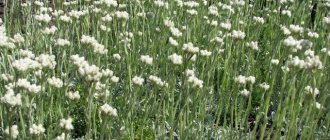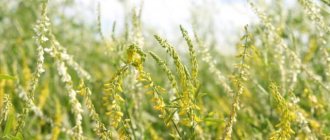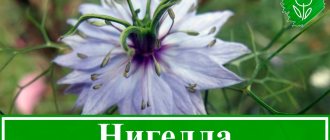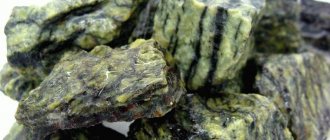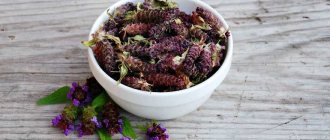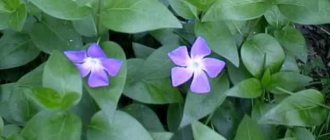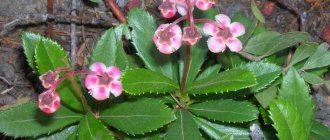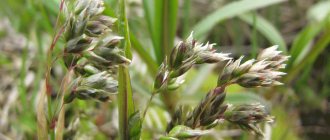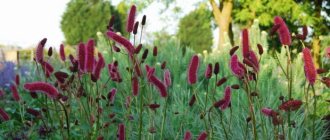Good afternoon, many will be interested in understanding their health and their loved ones, and I will tell you my experience, and we will talk about Cinquefoil anserina. Most likely, some details may differ, as was the case with you. Please note that you should always consult with highly specialized specialists and not self-medicate. Naturally, you can quickly find the answer to the simplest questions and diagnose yourself. Write your questions/suggestions in the comments, and together we will improve and supplement the quality of the material provided.
Cinquefoil is a perennial herbaceous plant, belongs to the Rosaceae family, with long thin creeping stems up to 60 cm long. Common names are cramp grass, caterpillar grass, soft grass, road grass, spruce grass.
The leaves are basal, imparipinnate, with elongated silky serrated leaflets. The flowers are regular, solitary on long stalks with a delicate aroma. The fruits are achenes. Cinquefoil blooms from May to September.
The plant's habitat is extensive - a significant part of Eurasia, North America, South Africa and Australia are found. We have them in almost all regions. It grows in river valleys, the banks of reservoirs, along streets.
Cinquefoil is a very unpretentious plant, grows on any soil, but prefers well-drained loam in a sunny place. Propagated by seeds, division, tendrils.
Collection, preparation
They use leaves that can be picked all summer long. Orni is dug in early spring or late autumn, when the above-ground part has already dried out. Dry very quickly, under a canopy or in a dryer at a temperature not exceeding 45 degrees. Sometimes shoots and flowers are used. The grass is stored for 2 years, the roots of the plant are stored for no more than 5 years.
Chemical composition
- tannins up to 25%;
- wax, protein;
- starch;
- organic, fatty acids;
- essential oil;
- resin, zinc;
- flavonoids;
- vitamin C.
What does it look like
In the photo, Potentilla Goose looks like a low-growing plant with a powerful root system that penetrates deep into the ground. The stem grows from the nodes of the rhizome and reaches a length of up to 70 cm.
Appearance (photo) of Potentilla gossamer Leaves are basal, have 9-20 leaflets, petiolate. The color is green above, silvery-white below. The sheet has a felt and velvety surface.
The flowers are deep yellow, solitary, five-petaled, have a pleasant aroma, grow on thin shoots emerging from the axils of the leaves. The convulsive grass blooms and bears fruit from the beginning of May until August. The fruit is a dry achene. Propagated vegetatively and by seeds.
Potentilla leaves
The article uses the leaves of Potentilla anserina. The leaves of Potentilla gossamer are a particularly valuable product; they are used in the preparation of traditional medicine. Potentilla decoctions have a diuretic effect. Lotions with leaves and juice of the plant are used for injuries and diseases of the skin. Infusions from the leaves of the plant are used not only for the treatment of internal organs, but also for rinsing the mouth.
Chemical composition
Potentilla leaves are a source of a large number of chemical elements necessary for the body:
- essential oils;
- ascorbic acid;
- fatty acid;
- tannins;
- flavonoids;
- starch;
- wax;
- choline;
- quinic acid;
- coumarins;
- microelements (potassium, zinc);
- carbohydrates.
Medicinal properties
Medicines based on cinquefoil help with pain of various types, including menstrual pain. The antispasmodic properties of Potentilla anserina help normalize the functioning of the muscular system.
The tonic effect of the medicinal herb stabilizes the functioning of the stomach , intestines, and stops inflammation in the liver, gall bladder and prostate gland. The leaves of the plant have diuretic properties and are used in the treatment of stone disease, cystitis and nephritis.
The medicinal properties of cinquefoil have been used since ancient times to stop bleeding, since the herb (especially its rhizome) has astringent and wound-healing properties. Fresh cinquefoil juice has a bacterial effect; it is used to treat shallow wounds and cuts.
Rinsing your mouth with a decoction of cinquefoil will relieve toothache, cracked tongue, and relieve inflammation and bleeding of the gums. Medicines have a strengthening and tonic effect on the body.
A large number of medicinal properties of the cinquefoil anserine allows it to be used without harm to health, but only if the recipe, dosage is followed and taking into account contraindications for use.
How to collect
For medicinal use, the leaves, stems, seeds and roots of cinquefoil are dried. Stems and leaves should be picked for drying during flowering. For collection, it is better to choose grass that is located away from sources of pollution (for example, highways). Potentilla should be dried outdoors in the shade. The roots are dug up in early autumn, the seeds are collected as they ripen.
Workpieces should be stored in cardboard boxes in a dark, ventilated area. Implementation period up to 2 years.
How to use
Medicinal compositions from cinquefoil leaves can be supplemented with dried root, which also has medicinal properties.
Tea for prostatitis
In case of prostate pathology, treatment can be carried out using anserine burr. The action of microelements contained in the medicinal plant will help relieve inflammation and reduce the symptoms of the disease.
Taking Potentilla anserina for prostatitis optimizes the functioning of the gland, removes harmful substances from the body and strengthens the general condition of the internal organs.
Ingredients:
- Dried cinquefoil leaves - 2 tsp.
- Water - 250 ml.
How to prepare : Pour the amount of herb required according to the recipe with hot boiled water. Infuse the mixture for 10-15 minutes, strain.
How to use : Drink tea in small sips. Don't add sugar.
Result : Reduced pain and discomfort, improved general condition.
In order to add flavor to the tea and increase its benefits, you can add a decoction of peppermint and lemon balm, taken in equal quantities.
Decoction for prostatitis
You can prepare a milk decoction of cinquefoil for prostatitis.
Ingredients:
- Dried cinquefoil leaves - 10 g.
- Milk - 200 ml.
How to prepare : Pour cold milk over the medicinal herb. Bring the mixture to a boil and cook for 5 minutes. Strain and let cool.
How to use : Take half a glass of the prepared decoction twice a day.
Result : Anti-inflammatory and restorative effect on the prostate gland.
Tincture for prostatitis
It is possible to take a more concentrated water tincture.
Ingredients:
- Dried cinquefoil root - 3 tbsp.
- Water - 1 l.
How to prepare : Bring water to a boil and pour in the chopped root. Leave for an hour, then strain.
How to use : Drink 1 glass of medicine half an hour before meals three times a day.
Result : Reduction of pain, restoration of normal functioning of the prostate gland.
Classification
Science knows more than 300 types of cinquefoil - herbaceous and bush. The plant is very popular in gardening due to its beautiful flowers and pleasant aroma.
- Department - Flowers.
- Class - Magnoliopsids (dicots).
- Order: Rosaceae.
- Family - Pink.
- Genus - Cinquefoil.
- Species: Cinquefoil anseri.
It is possible to take a more concentrated water tincture.
For diarrhea
Pour 10 g of crushed rhizome with 250 ml of boiling water. Cook over low heat for a quarter of an hour. Let it brew for twenty minutes, then strain. Take four tablespoons four times a day.
We recommend reading: Claritin during pregnancy: taking the drug in the 1st, 2nd and 3rd trimester
Forms of application
Each recipe with cinquefoil has a targeted effect. For more effective action, additional ingredients can be added to recipes, for example, herbal mixtures, milk.
Tea
Tea with the addition of herbs is used for cramps, pain associated with menstruation, problems with the functioning of the stomach and intestines, as well as general ailments.
Ointment with cinquefoil
An ointment made from cinquefoil is used to treat radiculitis and osteochondrosis. It contains butter and cinquefoil decoction, ratio 6:1. To reduce radiculitis pain and movement disorders, the cooled cream is applied to sore spots.
The ointment is also used to heal wounds, cracks, cuts and bruises.
Tinctures and decoctions
Effective in cases of urolithiasis, dysentery, gastritis, colitis, peptic ulcers, cholecystitis, and bleeding. When rinsing the throat and mouth, the drug treats inflammatory processes of the gums, sore throat, and stomatitis.
Potentilla decoctions are often used against seizures of various origins and even against tetanus.
Juice
Fresh juice of the plant is used for lotions for skin diseases, hematomas and wounds. They are used to rinse the mouth to improve the health of the gums and relieve inflammation.
An overdose of the drug can lead to exacerbation of diseases. Before treatment, consult a specialist and strictly follow the instructions for use.
For more information about Potentilla anseri, watch the video:
Indications for use
Due to its unique natural composition and many healing properties for the body, cinquefoil is used in various fields of traditional medicine. Most often, products based on a valuable plant are used to eliminate the following pathological conditions:
- Oral diseases: stomatitis, bleeding gums, gingivitis.
- Pathologies of the respiratory system: sore throat, bronchitis, pharyngitis, tonsillitis, cough of unknown etiology.
- Violations of the functioning of blood vessels and the heart: atherosclerosis, myocardial weakness, persistent hypotension.
- Neurological disorders: epilepsy, radiculitis, muscle pain.
- Diseases of the musculoskeletal system: arthritis, osteochondrosis, arthrosis.
- Diseases of the digestive system: disruption of the process of food digestion, decreased secretion of digestive enzymes, ulceration of the mucous membrane of the stomach and intestines, inflammatory diseases of the liver and gallbladder, frequent loose stools, intestinal dysbiosis, hemorrhoids.
- Pathologies of the female and male urinary system: cystitis, nephritis, urolithiasis.
- Disorders of the reproductive system: inflammatory diseases of the uterus and appendages, painful and heavy menstruation, prostatitis.
- Disorders of the central nervous system: frequent stressful situations, depressive states, disturbances in psycho-emotional balance, insomnia, memory impairment and concentration.
- Food and other types of body poisoning.
- Dermatological ailments: long-term non-healing wounds, cuts, cracks, eczema, dermatitis, furunculosis.
- Failures in the process of hematopoiesis, characterized by a decrease in the number of clotting factors.
- Metabolic disorders: diabetes, obesity.
Article on the topic: Variegated lily - beneficial properties, description
The healing properties of the goosefoot herb have been successfully used to strengthen the immune system, prevent frequent colds and viral illnesses, tonify the body, increase vitality and physical endurance. Some works of ancient healers describe the plant’s ability to cope with infectious diseases.
Contraindications
Due to its composition, the herb has a positive effect on the body.
Cinquefoil anserina has several contraindications for use:
- pulmonary tuberculosis;
- hernia;
- colitis with atonic constipation;
- hypertensive crises;
- stones in the kidneys;
- hemoptysis;
- uterine prolapse.
If an allergic reaction is detected, you should stop taking the drug.
It is strictly forbidden to use drugs with cinquefoil for people with individual intolerance, as well as for problems with blood clotting.
What to remember
- The leaves and rhizomes of cinquefoil have medicinal properties and are widely used in traditional medicine recipes.
- Medicines based on crow's feet have anticonvulsant, analgesic, diuretic, astringent, hemostatic and wound-healing effects, and regulate metabolism.
- The rich vitamin composition of cinquefoil has a positive effect on health.
The properties of this herb were successfully used by doctors and healers back in the Middle Ages to treat various diseases and were even immortalized in legends. A legend has survived to this day that the smell of the roots of a goose's foot, which grew near the spring from which Ilya Muromets, tired of endlessly lying on the stove, decided to drink, inspired him to defeat the Nightingale the Robber.
Of the many species of this plant, the most popular is the cinquefoil, which is recognized not only by folk medicine, but also by scientific medicine as a reliable biologically active agent for external and internal use.
This unique plant, known as goose grass, convulsive grass, toadgrass, foot grass, flatbread, martyn's hand and caterpillar, cures a whole bunch of diseases. In addition to its anticonvulsant effect, it has the ability to stop bleeding. Cinquefoil is one of the ingredients of the Bashkir balm “Kapova Cave” and is widely used in home magic for cleansing and protection from evil spirits.
general characteristics
The Latin name for cinquefoil is Rotentilla anserina L. A perennial herbaceous plant belonging to the family Rosaceae (rosaceae), it is distinguished by a thick and short rhizome and creeping “whiskers”, the shoots of which can reach a length of up to 70 centimeters.
Goose grass is widespread throughout the temperate latitudes of the Northern Hemisphere (in European and post-Soviet space), with the exception of high mountain regions. It chooses moist soil and bright light, taking root intensively near bodies of water, housing and in places where livestock are grazed. The plant covers the meadows with a luxurious carpet and is easily recognized by its oblong and smooth green leaves, characteristically covered with hairs.
During the flowering period from May to August, the plant looks incredibly attractive thanks to the towering and pleasantly smelling yellowish-golden flowers that grow from the axils of the leaves. The honey flower consists of five petals, and the fruits of the cinquefoil are clusters of dry achenes. Thanks to its beauty, the plant has found application in landscape design, in particular, it is widely used in decorating alpine slides.
Collection and preparation
All parts of the plant, including grass, flowers, seeds and rhizomes, are used in medicine. The harvest of goose grass begins with the beginning of its flowering in May and lasts until its end in August. The grass is collected away from roads. Dry it in the shade or in special dryers, as well as in well-ventilated areas.
Potentilla seeds begin to be collected after the fruits ripen, around the end of August, and the rhizome is dug up in early spring or autumn, after the above-ground part of the plant has dried.
Under the right storage conditions (in boxes, in well-ventilated areas), the collections do not lose their medicinal properties for two years.
Chemical composition and calorie content
Potentilla has a unique composition of biologically active components, the full spectrum of which has not yet been fully studied. In addition to vitamins and microelements, in particular choline and zinc, the plant contains organic and fatty acids, essential oils and glycosides with carbohydrates (glucose, fructose, rhamnose), as well as bitterness.
The leaves of the plant contain more than 220 mg of vitamin C, up to 30 mg of carotene, as well as ellagic acid (coumarins), tannins, flavonoids and leukoanthocyanidins.
Potentilla rhizome is also rich in ascorbic acid (more than 105 mg). The roots of the plant contain pigments and quinic acid, as well as a fairly large amount of protein and starch, which determines its use in addition to medicine and in cooking. The presence of tannins (up to 25%) and flavonoids in the leaves and rhizome of cinquefoil allows the plant to be used for tanning leather and as a dye.
The nutritional value of dry raw materials (crushed flowers, leaves, stems and roots of the plant) is about 140 kcal per 100 g. If we talk about nutrients, their content is as follows: 20 g of protein, 5.1 g of fat and 6.9 g carbohydrates.
If we talk about microelements in dry raw materials, these are, first of all, potassium (6.1 mg) and calcium (7.4 mg). The first is necessary in order to maintain the tone of the heart muscle and normalize the heart rate. In addition, it has antihistamine properties, relieving allergies, and helps maintain water balance in the body. Calcium is responsible for the condition of bone and dental tissue. Its deficiency negatively affects the condition of the skin and hair. Calcium is also necessary for normal blood clotting and normalization of the nervous system.
Magnesium (2.5 mg), together with calcium, is responsible for the structure of bone tissue and its strength. Its deficiency “hits” the kidneys and digestive system. This element is necessary to help the body cope with stressful situations and emotional overload. In addition, magnesium is a preventative against the appearance of stones in the kidneys and gall bladder.
Zinc (2.02 mg) helps improve skin condition, prevent inflammation, peeling, and allergic reactions. It also normalizes the functioning of the sebaceous glands. Its deficiency leads to insomnia, increased nervousness, and panic attacks.
Copper (1 mg) is necessary to prevent anemia. In addition, this element prevents the development of depressive conditions, helps with nervous overload, and has a positive effect on the condition of the skin and hair.
Cobalt (0.96 mg) is necessary to normalize the blood formula, since without it the formation of red blood cells is impossible. It also participates in normalizing the activity of the pancreas, stimulating the production of enzymes.
Use in medicine of the peoples of the world
The healing properties of cinquefoil have been successfully used since ancient times by folk healers of different nations in the treatment of a huge number of ailments.
Tibetan and Mongolian healers were well aware of the antiseptic properties of this herb, with which they treated gastrointestinal diseases, diarrhea and dyspepsia, as well as acne and uteroptosis.
Bulgarian doctors used goose grass to heal ulcers and catarrhs of the stomach, herpes and used it to treat dysentery, female diseases and during difficult pregnancy.
Karelian healers used convulsive herb to treat a whole “bouquet” of diseases. It was used to treat sore throats and cracked lips, tuberculosis, gastritis, migraines, arthritis, rheumatism, and for bruises and snake bites.
In Hungarian folk medicine, they knew about the property of toadweed to purify the blood and help with depression, neuroses and epilepsy, as well as with headaches and toothaches, swelling and joint diseases.
German healers offered herbal decoctions for diarrhea and colic, muscle cramps, various types of internal bleeding and painful menstruation.
Ukrainian healers used goose grass to treat tetanus.
The Indians used this plant to treat jaundice.
Bulgarians, Hungarians and Romanians successfully used cinquefoil to treat the endocrine system.
Traditional medicine recipes
As noted above, cinquefoil is widely used in folk medicine as a component of decoctions and infusions intended to treat a wide variety of ailments.
For gastrointestinal diseases
Pour 20 g of chopped rhizomes and herbs with a liter of boiling water. After an hour, filter. Take ¾ cup three times a day. The course duration ranges from 14 days to a month.
For the treatment of wounds
Boil 20-30 grams of chopped herbs in 250 ml of water for twenty minutes. Filter the finished mass and use for compresses. It can also be used as a rinse for bleeding gums.
For tuberculosis
Pour 20 g of herb into 200 ml of water. Boil over low heat for a quarter of an hour, and after two hours filter. Take three times daily before meals.
For urolithiasis and cholelithiasis
Mix equal amounts of fresh bloodroot juice with fresh green rye juice. Should be taken three times a day, 15 ml.
For uterine bleeding
Pour 10 g of cinquefoil with a liter of boiling water. Simmer in a water bath for a quarter of an hour. Take half a glass three times a day. Please note that this is an adult dose. Young girls should take 50 ml of the product.
For painful menstruation
Pour 5-10 g of seeds with 250 ml of milk. Boil for five minutes, then filter. Take half a glass twice a day.
For diarrhea
Pour 10 g of crushed rhizomes into 250 ml of boiling water. Boil over low heat for a quarter of an hour. Let it brew for twenty minutes, then filter. Take two tablespoons four times a day.
Places of growth
Potentilla goose occupies a vast territory of the Earth. The plant is very unpretentious to weather conditions.
The plant's habitat is quite impressive, covering a significant part of Eurasia and North America. Potentilla is found in Australia and South America. In Russia, Potentilla goose grows in almost all regions.
It grows in damp places: in meadows, along river banks, near housing, on neglected village streets. Often forms a continuous cover and is found everywhere. Popularly, this plant is often called goosefoot.
Potentilla goose prefers open, unshaded places. Loves abundant constant hydration. It grows well in pastures and pastures as it tolerates trampling.
Potentilla anseri reproduces vegetatively, so seed propagation is of secondary importance. The plant is perfectly renewed by sections of root tubers when plucked or cut.
Aboveground creeping shoots, from 20 to 80 centimeters long, take root at the nodes. The leaves of the cinquefoil are unpaired, five to seven separate. Their length reaches 10-20 centimeters, they consist of 6-15 pairs of oblong leaves from 1 to 4 cm long.
For diarrhea
Pour 10 g of crushed rhizomes into 250 ml of boiling water. Boil over low heat for a quarter of an hour. Let it brew for twenty minutes, then filter. Take two tablespoons four times a day.
